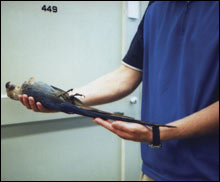In the summer of 1950, the same summer young Kelly was doodling in France, a 57-year-old Grosz was down in the dumps in New York. In his native Germany, his incendiary caricatures of corrupt, incompetent politicians and generals, war profiteers, maimed veterans, prostitutes and a feral citizenry had won him artistic accolades and landed him in hot water. (Grosz’s work, so suited to our political moment, cries out for a retrospective exhibit.) He fled to Manhattan in 1933, just moments before Hitler became chancellor of Germany and the Nazis visited his Berlin home and studio hunting for him. He arrived enthusiastic to start over, but nearly 20 years later he was struggling to make ends meet. Life magazine was asking whether Jackson Pollock was “the Greatest Living Painter in the United States.” Meanwhile, in the New York that was on the cusp of supplanting Paris as the center of the artistic universe, Grosz’s old-school style wasn’t selling.
“I must have somehow or other wanted this slow form of suicide,” he wrote to a friend. “ . . . But no one (apart from alcohol) can help a person in this position. Believe me, behind my LAUGHTER is an infinite melancholy.”
The Fogg presents a sketchbook he filled with drawings of New York skyscrapers (studies for a rare late commission) and exquisite portraits of mice smashed in traps in his Long Island home. There’s a facsimile you can flip through, but the real book is open to one of the mice drawings. You look over the nibbled bait to the mad eyes of the mouse and its clenched fist. Grosz’s pencil ranges from pale gray to velvety black, making the critter seem to pop off the page. He aims for an old-master realism in the mode of Albrecht Dürer. The mouse is so lovingly rendered it’s almost perverse. Grosz seems to exaggerate slightly what he saw to heighten the feeling of being caught, of mortality. I can’t help wondering whether his juxtaposition of skyscrapers (the triumph of American modernism) and dead mice (age-old vermin) says something about a sour reality he felt underlying the promise of New York and life just then or whether the pairing is just coincidence.

ENDANGERED: But Håkansson’s installation is like a tear-jerker TV movie. |
There are maybe 60 Spix’s macaws left in the world, and perhaps none in the wild. Henrik Håkansson, a Swedish artist who was in residence at the Isabella Stewart Gardner Museum in 2003 and 2004, takes this depressing news as the subject for his installation Cyanopsitta spixiiCaseStudy #001. In a press release he says, “Not unlike the fragility of great works of art that we expect to last forever, the disappearance of this rare and beautiful species illustrates a naivety that exists about the idea of permanence — and what society can do to destroy it.” The stuffed 200-year-old carcass of a Spix’s macaw borrowed from Harvard’s Museum of Comparative Zoology lies in a case. It has yellow eyes, a white head, a blue tail, and black claws. Its once vivid colors have gone dull. One wall has a Spix’s macaw timeline: discovery by Europeans in 1818, appearances in Western zoos, export bans, sightings in the wild, poaching, breeding programs, a 1990 report of one last male in the wild that vanishes a decade later.